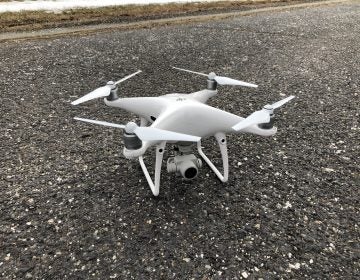Pentagon IDs remains of Tuskegee Airman killed in WWII
Sixty-six Tuskegee Airmen died in combat, including 27 who were listed as MIA. Dickson was the first to be identified.

This undated photo provided by the Pentagon's Defense POW/MIA Accounting Agency shows Lawrence Dickson, a New York pilot killed during World War II. Dickson is first of the 27 Tuskegee Airmen still listed as missing in action whose remains the Pentagon says they have identified through DNA samples provided by his daughter in New Jersey. Dickson was a 24-year-old captain in the 100th Fighter Squadron when his P-51 fighter plane was seen crashing along the Italy-Austria border during a mission on Dec. 23, 1944. Searches for the crash site were unsuccessful until 2012. (Defense POW/MIA Accounting Agency via AP)
The remains of a New York pilot killed during World War II are the first of the 27 Tuskegee Airmen listed as missing in action to be identified, the Pentagon announced Thursday.
The Defense POW/MIA Accounting Agency, the agency charged with recovering and identifying the nation’s war dead, said the remains accounted for earlier this year are those of Lawrence Dickson of Manhattan. Dickson was killed in a crash in Europe 74 years ago next month.
Dickson was a 24-year-old captain in the 100th Fighter Squadron when he took off in his P-51 Mustang fighter plane from a base in Italy to conduct an aerial reconnaissance mission on Dec. 23, 1944. During the return flight, Dickson’s engine failed and his plane was seen crashing along the Italy-Austria border, the Pentagon said.
Searches for the crash site were unsuccessful, and in 1949, the U.S. military declared his remains non-recoverable.
In 2012, an American recovery team found the crash site in Austria after receiving information from an Austrian researcher. The team found wreckage matching Dickson’s type of fighter.
Excavations conducted over four weeks in the summer of 2017 by the University of New Orleans and Austria’s University of Innsbruck resulted in the recovery of human remains.
The skeletal remains were later identified as Dickson’s through DNA samples provided by his daughter, Marla Andrews, of East Orange, New Jersey, and another relative.
“I was spaced out,” Andrews said Thursday as she recalled her feelings last year when the Pentagon told her progress had been made in her father’s MIA case. Last summer, the Pentagon gave Andrews and her relatives an official confirmation.
“A lot of things have to come together for something like this to work,” Andrews told The Associated Press in a telephone interview from her home.
Andrews was 2 years old when her mother received notification that her husband was missing in action. She was born in a hospital in Harlem, where Phyllis and Lawrence Dickson were living when he enlisted in the Army.
A South Carolina native who loved music and played the electric guitar, Lawrence Dickson was sent to Tuskegee, Alabama, for training in a newly formed African-American air squadron. The storied Tuskegee Airmen would shatter aviation and racial barriers during World War II.
Qualifying as a pilot, Dickson flew with the 332nd Fighter Group’s 100th Fighter Squadron, known as the “Red Tails” for the color of their aircrafts’ tails.
Sixty-six Tuskegee Airmen died in combat, including 27 who were listed as MIA when the war ended.
Dickson was the first of those 27 to be identified, a DPAA spokesman said.
Among the items recovered from the crash scene was part of a harmonica Dickson carried with him during flights.
“Little things like that have been quite comforting,” Andrews said.
Phyllis Dickson died last December at 96 in Nevada, her daughter said.
Lawrence Dickson will be buried March 22 with full military honors at Arlington National Cemetery.
WHYY is your source for fact-based, in-depth journalism and information. As a nonprofit organization, we rely on financial support from readers like you. Please give today.




